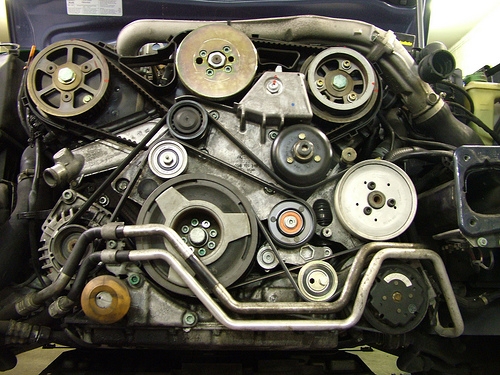
In short, the ratios of a transmission's gears define its ability to convert engine RPM to acceleration. These ratios play a role in top speed, acceleration, fuel mileage and even engine longevity.
A gear ratio is defined as the difference between input shaft (engine) speed, and output shaft (drive-shaft) speed.
Transmissions have low first gears that permit the engine to spin faster than the tires, which increases its mechanical advantage and increases acceleration.
The gear's "ratio" is the number of teeth on the output-drive gear compared to those on the input shaft. If a transmission has an input shaft with 20 teeth that meshes with a 60-tooth gear on the output shaft, then its ratio is 3 to 1 (60 divided by 20).
If a transmission has many gears that are very close in ratio, it is called a "close-ratio" transmission. This gear arrangement increases acceleration in vehicles with high-revving engines.
An overdrive gear is one that uses a smaller gear on the output shaft than that on the input shaft. This causes the drive-shaft to spin faster than the engine, which increases fuel economy under cruise conditions.